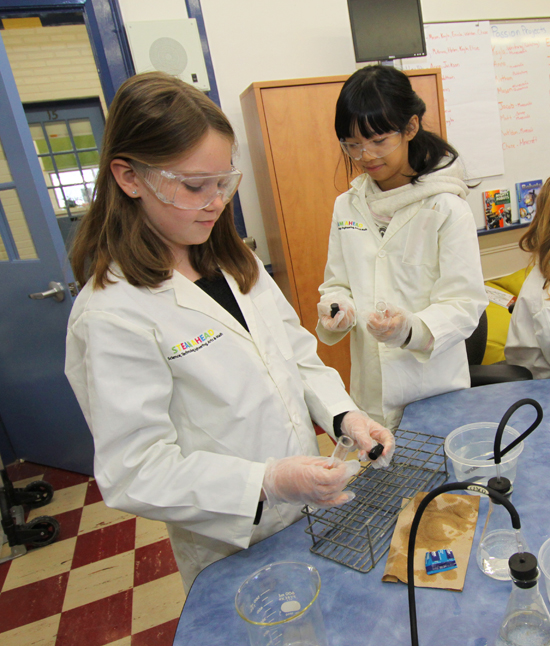The STEAM Age
February 8, 2021

Enrichment program the start of an ongoing learning journey
Winnipeg School Division (WSD) students are enjoying enrichment education in dynamic new settings with the opening of four STEAM Enrichment Centres.
The centres are providing students from across WSD a chance to experience inquiry-based programming that focuses on excellence in Science, Technology, Engineering, Arts, and Math education (thus providing the STEAM acronym). This year the program is focusing on Grades 4-6 students.
WSD Director of Program Support Brad Corbett said the centres are part of a division-wide priority to explore enrichment programming.
Students from each elementary school across the WSD attend their district’s STEAM Centre for one day a week for a block of eight weeks. The four STEAM Centres are located at Pinkham School (Inner City District), Isaac Brock School (Central District), Luxton School (North District) and Rockwood School (South District).
“The goal of the STEAM centre is to develop talent in students and inspire them to become inventors, critical thinkers, risk takers, as well as independent and collaborative problem solvers," Mr. Corbett said.
Each STEAM Enrichment Centre is staffed with a Lead Consultant/Support Teacher from the Program Support Team.
“The initial part of the program identifies students interests, strengths, and learning styles,” Mr. Corbett noted. “That becomes a starting point for the STEAM leaders to identify and support the children in their inquiry journey.”
Online resources enhance learning
The students’ STEAM experience does not end after their eight-week session; students will receive an online web-based Renzulli Learning System license. Designed by Dr. Joseph Renzulli, the system will enhance students’ inquiry learning and allow each learner to continue work in the program at school and at home.
Parents, guardians and teachers will be able to monitor their student’s progress and growth.
Classroom teachers will also have access to all of the resources and materials for the online program, which they can use to support other students in the classroom.
STEAM leaders will also be visiting the students in their schools to follow their progress and provide further enrichment projects.
“Through the Renzulli Learning System, students are able to continue their collaborative inquiry learning and maintain the network of relationships with their STEAM peers. The STEAM leaders go to the schools to visit the students and their home school teachers to see how they’re progressing in their learning.”
Projects focus on students' interests
In the STEAM Centres, students begin the groundwork for major inquiry projects that will continue through the school year.
“We all have these passion projects that are about things we like to do,” said student Queenston School student Anna Hunter, who was enrolled in the South District STEAM Centre at Rockwood School.
Students’ projects range from robotics to video game design to self-publishing writing.
Queenston student Kayla Mintenko, who was attending STEAM at the same time as Anna, was building a scale model of Salzburg, Austria (birthplace of Mozart) in Minecraft—a computer game that is the digital age’s answer to Lego.
“It will have all the famous places, like Hohensalzburg Castle,” Kayla said of her project. She added that the passion projects were her favourite part of the program.
“It’s good because your project can be about your interests and your talents. We don’t all have to learn the same thing.”
Creating self-driven learners
South District STEAM consultant Richard Roberts said engagement is key to creating self-driven learners.
“Most students are highly motivated when they are learning in a way that interests them,” he said. “These kids are highly engaged, so we’re looking at how we can differentiate. We can take what they are excited about and apply it in a bunch of creative new ways.”
While many of the students’ projects are ambitious, the STEAM program is giving students the tools to undertake long-term projects and learning goals.
“In some cases, these will be yearlong projects,” Mr. Roberts said. “My hope is that they’ll walk away from here with a plan and know what their next steps are going to be, and there will be a plan in place for them to continue that learning in school.”
Another major component of the STEAM program will be for students to learn through a social justice lens.
“We want students to be thinking about how they can use their gifts, strengths and talents to make the world a better place,” Mr. Corbett said.

